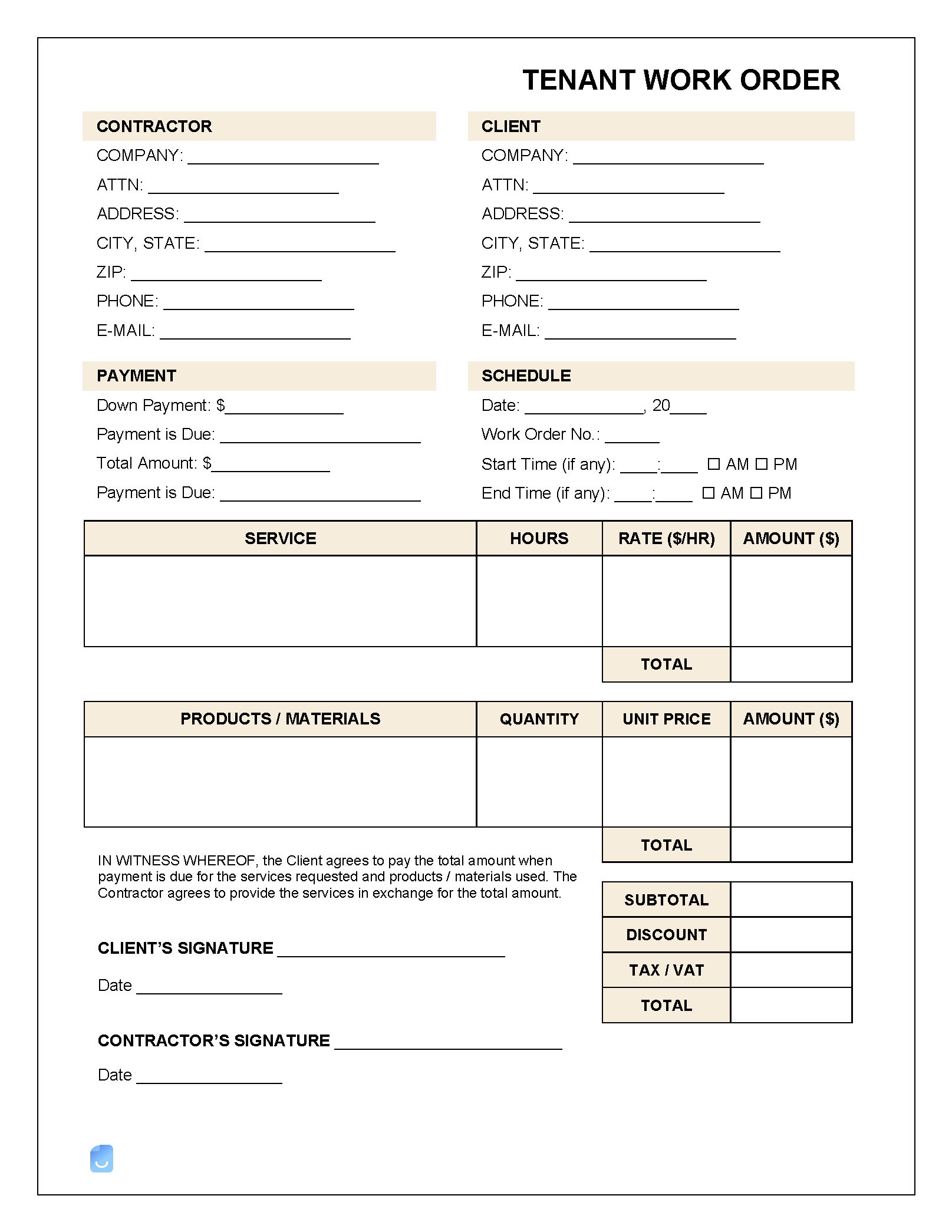Tenant Work Order Template
A tenant work order is a form, either online or printed, that gives the tenant to a residential or commercial property a convenient means of requesting a repair to their unit. The form contains spaces for the tenant to state who they are, the unit they’re occupying, which room(s) have a problem, and a description of the issue. Unlike more standard work orders, ones used by tenants for requesting repairs rarely include prices, as the repairman is typically responsible for giving an estimation of both parts and labor.

What to Include in a Tenant Work Order Form
In a tenant work order, the general rule is to lean towards including more information, rather than less. Having said, work orders are not a place for run-on sentences and drawn-out paragraphs. The information they contain needs to be concise and to-the-point to provide that the handyman can understand the problem without asking follow-up questions. To ensure a tenant work order is sufficiently detailed, it should include the following:
- Full name of the tenant and their contact information
- Address of their property + unit number
- Comprehensive description of the issue(s)
- Date of repair request
- Signature of tenant requesting the repairs
The process for tenant work orders is relatively straight forward. Depending on the requirements listed in the lease agreement, the process typically goes: the tenant identifies an issue in their unit and they call, email, or visit the landlord in-person to deliver the news. If the landlord requires the tenant to complete the work order form, the tenant will complete all required fields and either scan and email the form, fax it, or deliver it by other means. If the landlord thinks they can fix the issue on their own they will schedule a time to head over (or call the tenant and head over asap). If the problem is relatively simple, such as a burnt-out light bulb or clogged toilet, the landlord will most likely be able to fix it themselves. If the problem is more complicated, however, they will contact a handyman to 1) inspect the issue and create a quote for the repair, and 2) fix the problem(s).
Common Tenant Repair Requests
Given enough time, no landlord is safe from avoiding repair requests. Although no property is the same, landlords will find they receive the following repair requests more than anything else:
- Leaky pipe from under sink
- Clogged drain
- Water leaking from ceilings
- No hot water (requires a new heater)
- Pests (bugs, rodents, etc.)
- Appliance issue
- Drywall holes
If there’s anything landlords know about their job, it’s to expect the unexpected. Although the above repair requests are some of the most common, landlords often find themselves handling issues that were the least of their concerns.